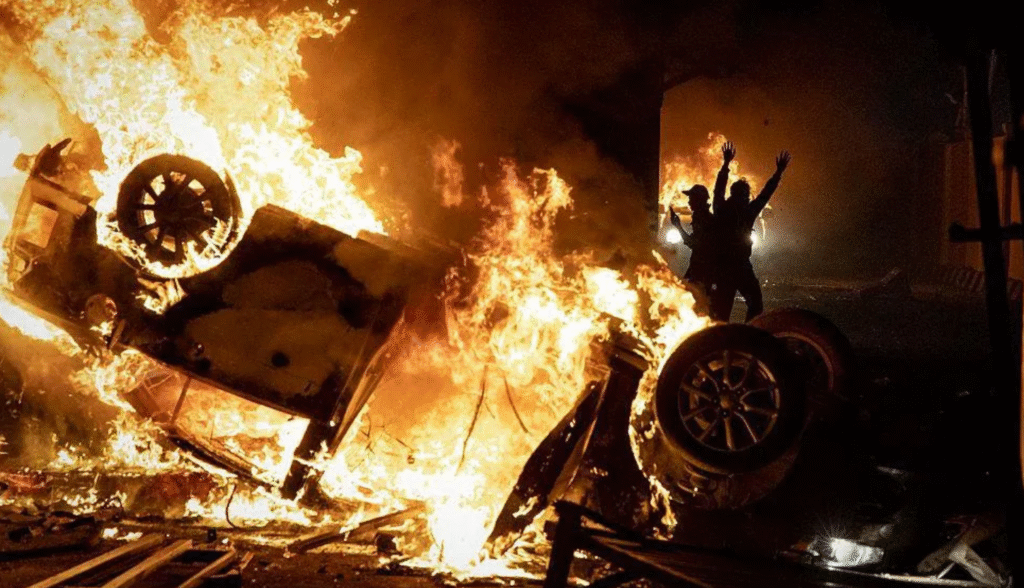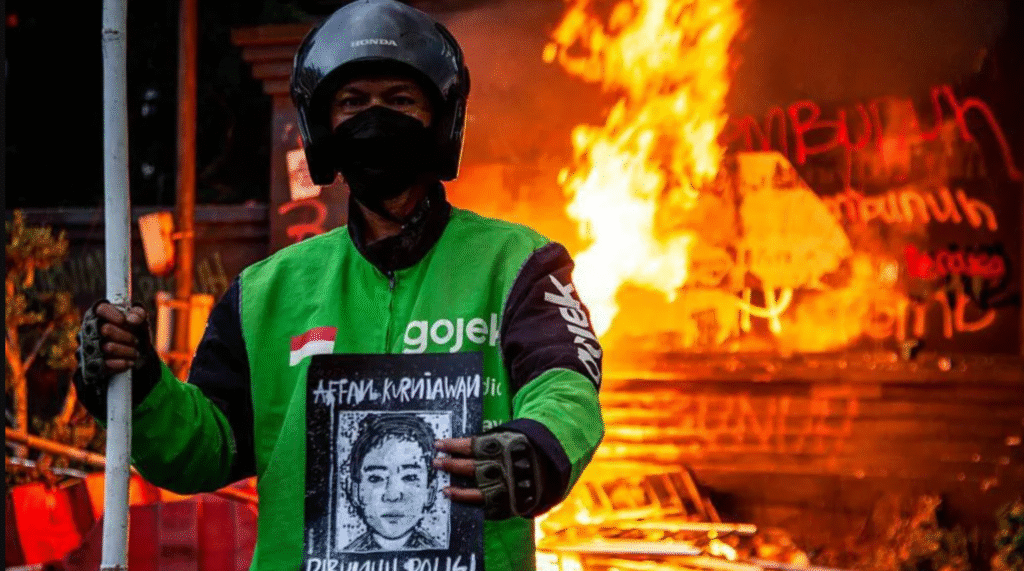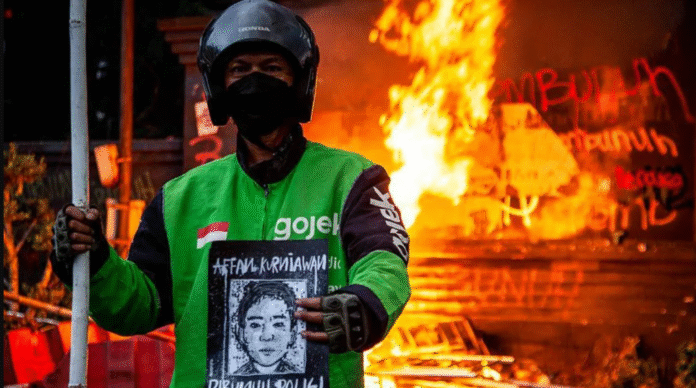Indonesia Protest Death Sparks Nationwide Fury-Shocking Facts
Indonesia protest death sparks nationwide outrage after a 21-year-old delivery driver was killed during clashes with police in Jakarta. What began as peaceful demonstrations over parliamentary perks has exploded into one of the country’s most significant waves of unrest in decades.
The anger is no longer just about politicians’ paychecks, it’s about inequality, corruption, and accountability. Across cities from Jakarta to Bali, people are demanding change, and the government’s response could determine whether this crisis becomes a turning point in Indonesia’s democracy.

The Death That Ignited a Movement
The tragic death of Affan Kurniawan, a young rideshare driver, has become the face of this protest movement. On August 29, as police tried to disperse demonstrators, officers ran over Affan, killing him instantly.
His death triggered a surge of anger that transformed the protests into a nationwide movement. President Prabowo Subianto and the national police chief publicly apologized, but for many Indonesians, it was too little, too late.
Why Indonesians Are Protesting
At the core of the unrest is public outrage over parliamentary perks. Lawmakers reportedly earn upwards of 100 million rupiah per month (over $6,000), 30 times the national average, while millions struggle with rising food, housing, and fuel costs.
Indonesia’s parliamentarians earn among the highest allowances in Southeast Asia.
The government’s decision to increase housing allowances was seen as a slap in the face during a cost-of-living crisis. For ordinary citizens, the gap between political elites and everyday struggles has never felt so wide.
Indonesia Protest Death Sparks Bigger Issues
The Indonesia protest death sparks wider frustrations beyond Affan’s tragedy. Protesters are also speaking out against:
- Police brutality and lack of accountability
- Corruption among political elites
- Social inequality made worse by economic pressures
- Weak governance that favors the rich
Experts say this is not just about one policy decision, it’s about systemic failures that have built up over decades.

A Crackdown That Escalated Tensions
Instead of calming the crisis, the government’s crackdown has fueled more anger. Protesters torched regional council buildings, looted homes of politicians, and set cars ablaze.
In Makassar, a fire inside a parliament building killed at least three people after demonstrators set it on fire. Videos of police using rubber bullets and tear gas have gone viral, further inflaming public sentiment.
Government Attempts Damage Control
Facing his biggest leadership test since taking office in 2024, President Prabowo announced he would cut some politicians’ allowances. While protesters welcomed the move, critics called it symbolic and insufficient.
Former student leader Herianto said the reforms “do not address the root causes of discontent,” such as governance, accountability, and fair economic opportunities.
Historical Context: A Dangerous Echo
Prabowo’s challenge is reminiscent of the protests that toppled Suharto in 1998. Back then, student-led demonstrations ended decades of authoritarian rule.
Now, many see the current protests as the largest outbreak of unrest since reformasi, the democratic transition that reshaped Indonesia.
What Happens Next?
The future of this movement remains uncertain. Will it fizzle out under security crackdowns, or will it force genuine reform? Analysts warn that unresolved economic hardships could sustain the unrest.
President Prabowo’s response will determine whether Indonesia enters a new chapter of reform—or repeats the mistakes of its past.

